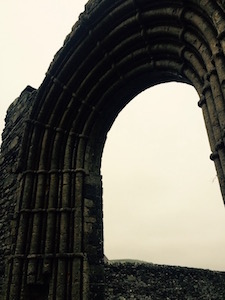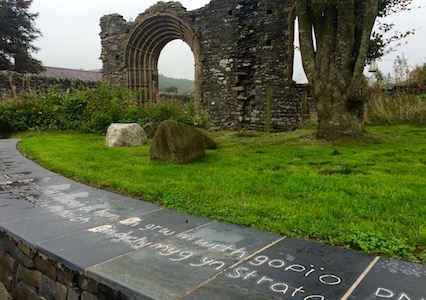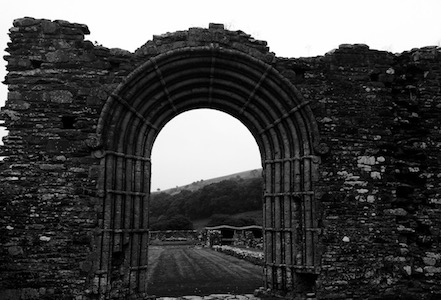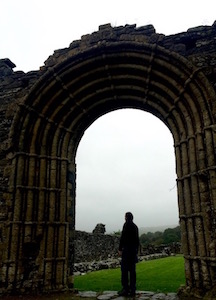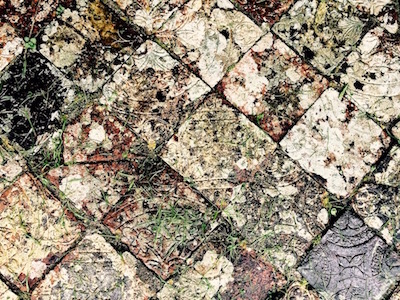September 28, 2016
Chances are if you've done any tourist-level research into Wales, you've seen a picture of the arch at Strata Florida Abbey. It's the one with only the arch left standing, indicating the abbey's formerly gigantic western doorway.
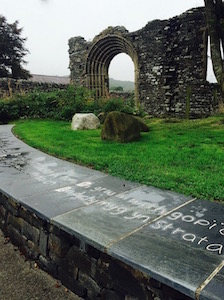
Founded in the 12th century by Cistercian monks, the abbey is well on the tourist trail. It being a rainy September day mid-week, however, P and I found an almost deserted ruin, albeit an almost deserted very wet ruin. This of course allowed us to play the interactive video games in the visitors center all by ourselves, though we held off dressing up in the costumes we found in the corner.
Even better, being there alone meant we had time to discuss becoming members of CADW with the woman at the desk - CADW being the Welsh owned organization that maintains historic properties in Wales. Given my intent of seeing a whole lot of history while in Wales; that P and I could together get a pass for 50 pounds; and the high cost of admission to most sights, it made a lot of sense. Also we got a free car decal with two children playing with swords on it - so totally worth it.
The Rain on the Plain of the Bloom
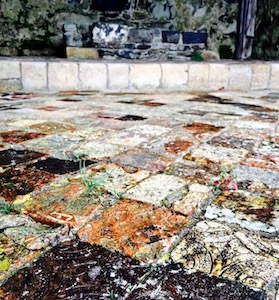
Anyway, after playing with the toys provided at the visitor center, we took a look around. Although there wasn't much left of the abbey, the setting made what was left all the more beautiful, even in the rain. In the summer, the abbey probably lives up to its name, which is the latinized version of Ystrad Fflur, or the 'plain of the bloom', as the land where it was originally located was called. Apparently in springtime every rock is covered in flowers, which must be gorgeous.
For now, we focused on the parts of the abbey that we could see - besides the large doorway, the abbey boasts a segment of the best and most intricate tile-work of its day found in the UK. These were really neat to see and very well preserved.
It doesn't just look interesting. . . But I digress
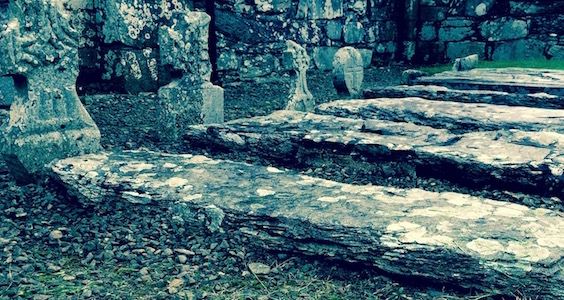
But for me, it was even more interesting to learn about the importance of the former 'Westminster Abbey of Wales' to Welsh history, and why several princes are buried here. I'm sure I haven't gotten it all right, but basically when, in 1212 the abbey was found to have been supporting Llewelyn ab Iorweth, prince of Gwynedd (who also built Castell y Bere that we'd just been to see), it was fined the tremendous sum (at the time) of 800 pounds, which I think is about two bazillion pounds in today's terms. Then, in 1238, Prince Llewelyn gathered all the princess of Wales together in the abbey to swear loyalty to his son Daffyd. The Abbey was burned by Edward I in 1294, rebuilt by Henry IV, and then brought entirely to an end due to the Dissolution of the abbeys by Henry VIII in 1539.
Basically, the abbey at the time was a center of Welsh culture and politics - so obviously when others came in to conquer Wales in whatever form it was taking at the time, the first things they would destroy are these cultural landmarks. Of course it's simple to say it's a shame when you think about it from a purely tourist 'I want to see old buildings' standpoint . . . But it's also a shame that it's so hard, as a foreigner, to get a sense of what this all actually means to Welsh people. It happened so long ago, and the country is in parts in so many ways anglicized, and moreover is considered anglicized by much of the rest of the world, it's hard to really understand what all this means.
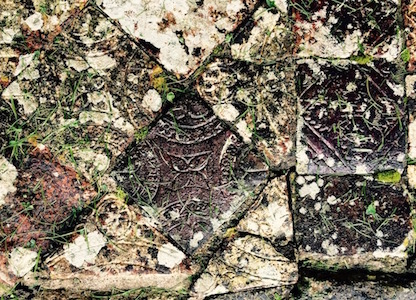
But some other time, maybe after I've had a Welsh language class, I'll go on more about this train of thought. For now, I'll just say we wandered around the Abbey and viewed the burial slabs of monks and princes; beautiful medieval stone tiles; a massive and intricately worked 12th century Norman arch; and the resting place of one of Wales' greatest medieval poets Dafydd ap Gwilym.
And while that was wonderful, sadly I have to report that I failed to remember that I had heard that in the nearby graveyard is a headstone that reads 'The left leg and part of the thigh of Henry Hughes, cooper, cut off and interred here June 18th 1756'. So I didn't get a chance to pay homage to Mr. Hughes, who, even with one foot in the grave, nevertheless eventually left Wales to live in America, where the rest of him is buried. Which would have been great, for the terrible joke alone - but c'est la vie.

